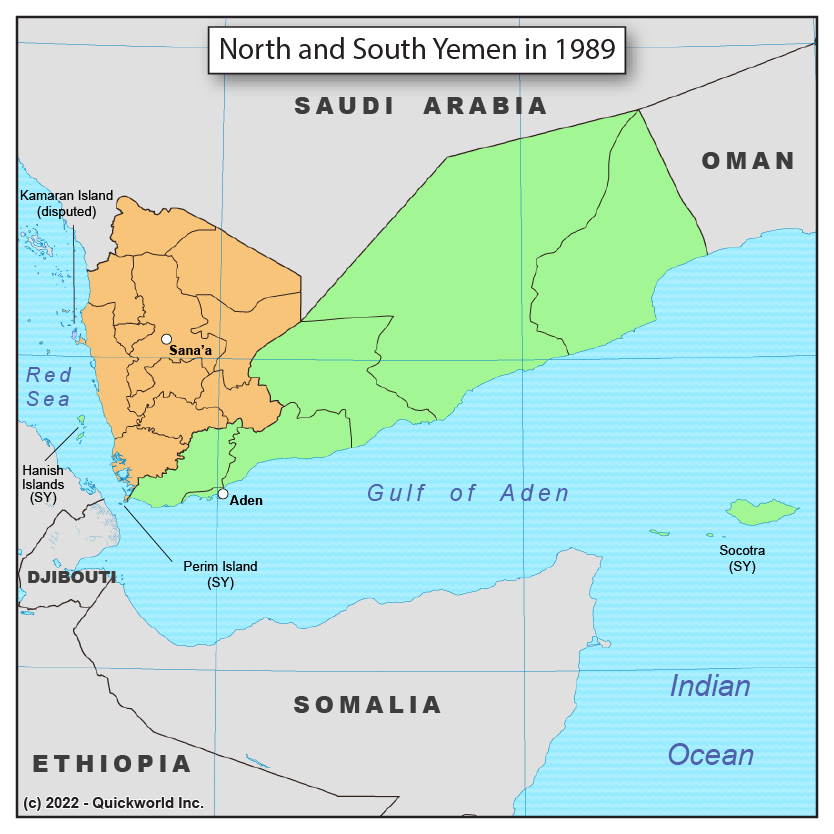The modern history of Yemen is one of separation and reunion of two distinct regions: the North, centered around the mountains of "Arabia Felix", "Happy Arabia" to the Romans, due to the lush vegetation that contrasts with the rest of the peninsula, spent centuries in and out of the influence of the Ottoman Empire, finally gaining its independence after the First World War. In the South, the Indian Ocean-facing territories were a group of independent fiefdoms that came under the protection of Britain. With the Red Sea becoming strategic after the opening of the Suez Canal, the British built a refueling station in Aden, and then gradually made treaties with local tribes.
Great Britain granted independence to its dependency in 1967, and the new Republic of South Yemen quickly fell under the protection of the Soviet Union. The collapse of communist regimes globally in the late 1980s led to great instability, which allowed the unification of both countries in 1990. North Yemen and South Yemen are therefore historical countries at this point, but the instability and civil conflict that has engulfed Yemen in the last few years might result in future secessions, either along the previous line or new ones.
More on Yemen
North and South Yemen


